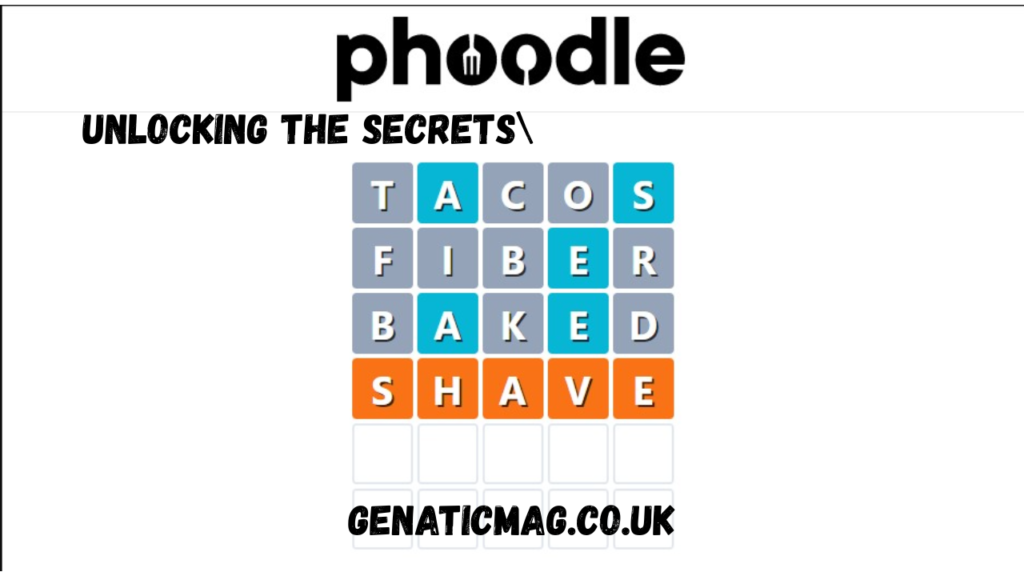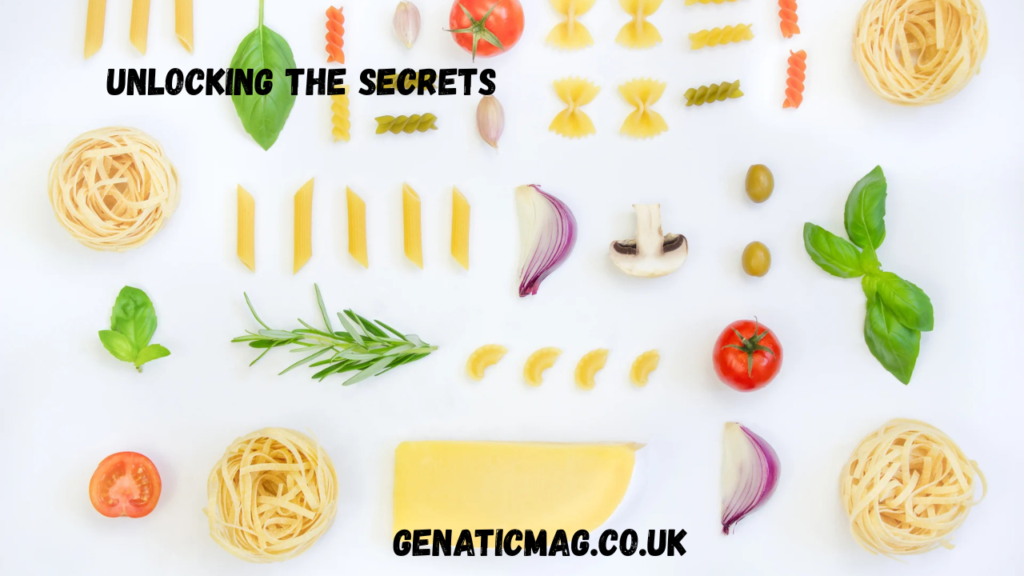Trivia fans, foodies, and word puzzle fans, rejoice! If you’ve been enthralled with Phoodle’s growing appeal, you are aware that it’s more than simply a word game; it’s a delectable challenge that blends engaging brainteasers with gourmet language. But let’s face it: it might be annoying at times to figure out that five-letter term that has to do with eating. This tutorial can help with that. Cracking the Code: Your go-to resource for deciphering the clues, comprehending the mechanics, and improving your guessing skills is A Comprehensive Guide to Phoodle Hint, Tips, Tricks, and Winning Strategies??
Whether you’re a seasoned chef or just someone who loves a good brain workout, this guide will help you become a true Phoodle master.
What is Phoodle, and Why is It So Addictive?

Let’s first define Phoodle before moving on to the tips and techniques. Inspired by the worldwide phenomenon Wordle, Phoodle transforms the traditional word-guessing game into a gourmet experience. Players get six opportunities every day to guess a hidden five-letter word linked to food—imagine ingredients, dishes, kitchenware, and even cooking methods.
What makes Phoodle particularly addictive is its combination of simplicity and specificity. The rules are easy to follow, but the food theme narrows the vocabulary, making it both easier and trickier at the same time. You’ll find yourself thinking, “Wait, is that a kitchen term? Or just a regular word?”
Mastering the Basics: Understanding How Phoodle Works

At first glance, Phoodle might seem like just another Wordle spin-off, but understanding its inner workings is key to success. Here’s how it plays:
- Five-letter word: There are always five letters in the word you have to guess.
- Six tries: You can make it right six times.
- Color-coded comments:
- Green indicates that the letter is positioned correctly.
- Yellow indicates that the letter is present in the word but is positioned incorrectly.
- Gray indicates that the letter is completely absent from the word.
- Green means the letter is in the correct position.
- Yellow means the letter is in the word, but in the wrong position.
- Gray means the letter isn’t in the word at all.
But unlike Wordle, Phoodle words are strictly food-themed. That slight difference makes a big impact, and using that knowledge is crucial to your winning strategy.
Using a Phoodle Hint Effectively: What Does It Really Mean?

The Phoodle Hint, a little prod to get you going in the right path, is one of the most awesome features of Phoodle. However, a lot of gamers are unsure on how to properly decipher these clues. Not every “Phoodle Hint” is a clear definition. It may allude to:
- A category (e.g., “herb”, “utensil”, “dessert”)
- A flavor profile (“spicy”, “sweet”, etc.)
- A cultural cue (“Italian”, “Mexican”, etc.)
- A cooking method (“fried”, “grill”, etc.)
Pay close attention to these clues—they might not give away the answer, but they narrow down your guess pool significantly.
Pro Tip: Keep a list of common five-letter food terms in various categories. You’d be surprised how often these pop up.
Strategic Guessing: How to Use Your First Three Tries Wisely
Early-game strategy can make or break your chances. Random guessing might sometimes land you a win, but calculated moves are much more effective. Here’s how to plan your first few attempts:
Try a Broad Food Word First
Use an initial word like “spice” or “grape” that has common letters and fits the food theme. You want to maximize letter coverage while staying in the culinary realm.
Second Guess: Narrow and Adjust
Based on your first guess’s feedback, make an adjustment. If you got a green “P” and a yellow “E,” your next guess should reposition that “E” and lock in the “P.”
Third Guess: Think Functionally
After your first two tries, you’ve likely identified at least one correct letter. Now is the time to go category-specific. If you suspect the word is related to baking, try words like “scone” or “knead.”
Themed Thinking: Unlocking Categories and Associations
Here’s where things get fun—and a bit more advanced. Phoodle isn’t just about letters; it’s about associations. Once you get a hint, train your mind to group possibilities. Let’s break it down by theme.
1. Ingredients & Spices
These are very common. Think of five-letter ingredients like:
- Basil
- Cocoa
- Olive
- Onion
2. Kitchen Tools
Not every answer is edible! Some are tools you use in the kitchen:
- Whisk
- Knife
- Stove
3. Cooking Methods
Verbs and techniques also show up:
- Sauté
- Broil
- Bake
4. Dishes & Cuisines
The answer might be a dish name or cuisine-specific term:
- Sushi
- Tacos
- Curry
When you recognize the pattern in the hint, start mentally listing all the five-letter possibilities that fit.
Common Traps: Avoid These Phoodle Pitfalls
As fun as Phoodle is, there are a few common mistakes that even experienced players fall into:
- Forgetting it’s food-themed: That “zebra” guess? Not helpful here.
- Using rare words too early: Save the more obscure terms for later in the game when you’ve ruled more out.
- Ignoring repeated letters: Words like “salsa” and “pizza” often trip people up because of duplicate letters.
- Overthinking: If the hint is “cheese,” the word might just be “cheddar” or “gouda”—keep it simple.
Developing a Daily Phoodle Ritual: Practice Makes Perfect
The best players treat Phoodle like a daily exercise. Here’s a sample routine to improve:
- Start with your favorite five-letter food word
- Keep a notebook of past words and strategies
- Reflect on what worked and what didn’t
- Challenge friends and compare hints
Daily play not only builds your vocabulary but sharpens your logic and word-association skills. Over time, you’ll start seeing patterns and recurring themes.
Why Phoodle is More Than Just a Game
Phoodle isn’t just about guessing a word; it’s a journey through culinary culture. Every word you guess exposes you to new ingredients, new techniques, or even foods you’ve never heard of. It’s educational, fun, and mentally stimulating—all in a quick, daily package.
More than that, it brings people together. Sharing your guesses, swapping hints, or debating the trickiness of a word creates a social buzz that’s hard to beat.
Conclusion: Winning Phoodle with Confidence
Now that you’ve read through Unlocking the Secrets: A Comprehensive Guide to Phoodle Hint, Tips, Tricks, and Winning Strategies??, you’re armed with everything you need to conquer the game with skill and strategy. Remember, success in Phoodle comes from a mix of sharp logic, food knowledge, and a playful mindset.
With daily practice, smart use of hints, and a growing awareness of food-based vocabulary, you’ll not only boost your winning streak—you’ll have a blast doing it.
So go ahead. Open today’s puzzle, use that hint wisely, and savor the satisfaction of solving your next Phoodle like a true word-chef
Also Read : The Ultimate Guide to the Collaborative Fan Site Crossword Clue
